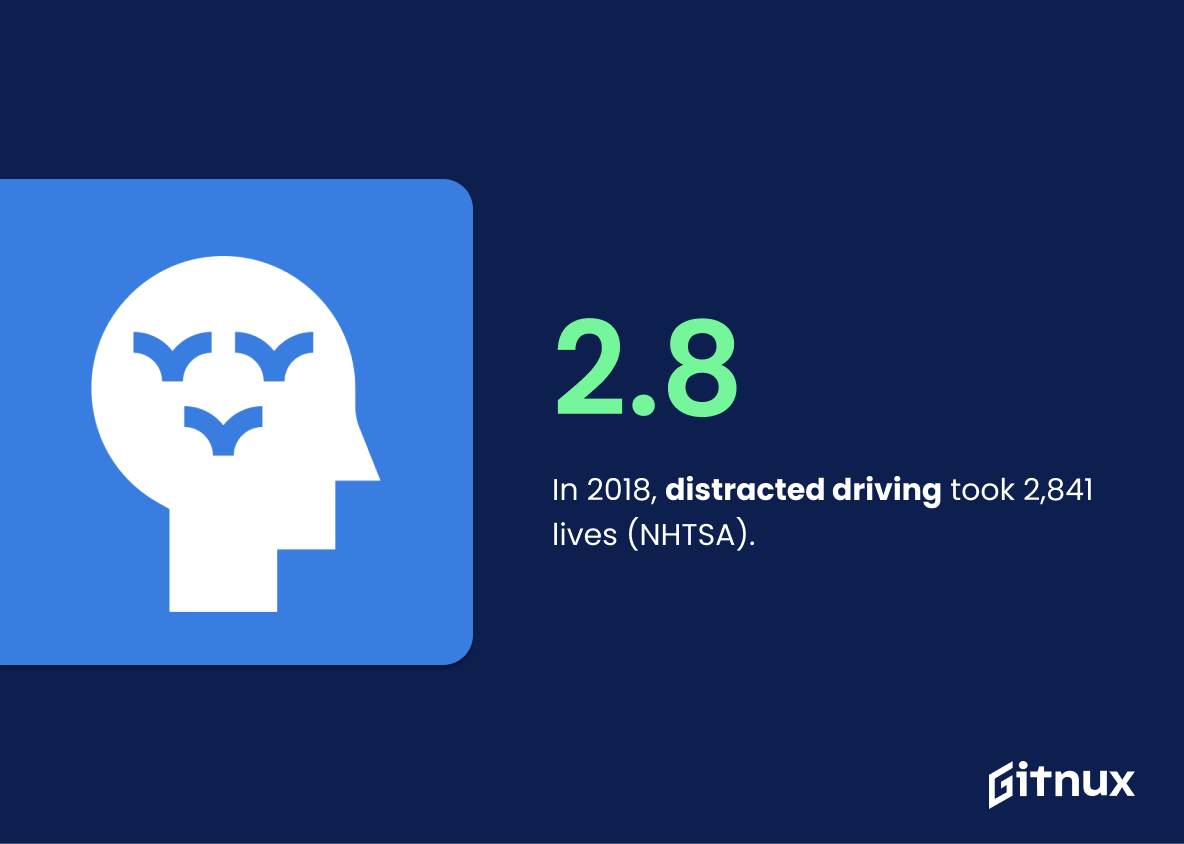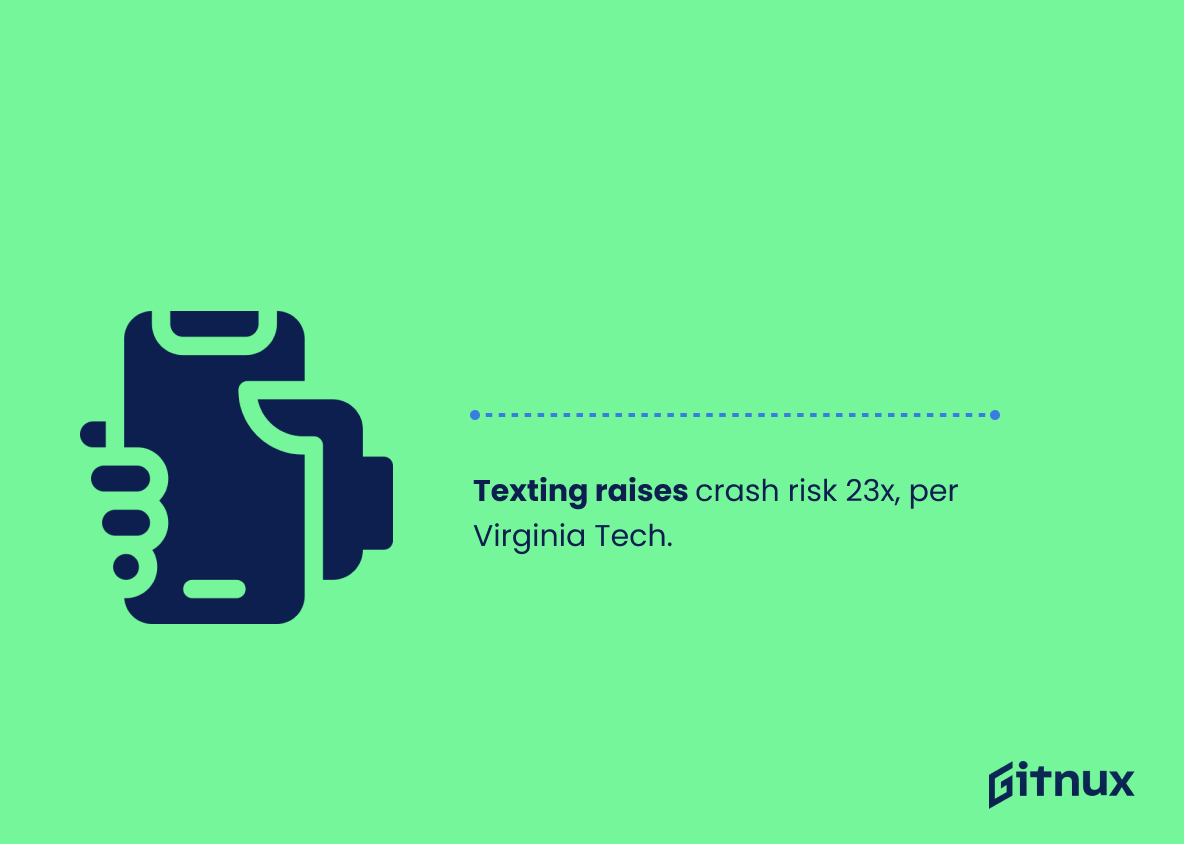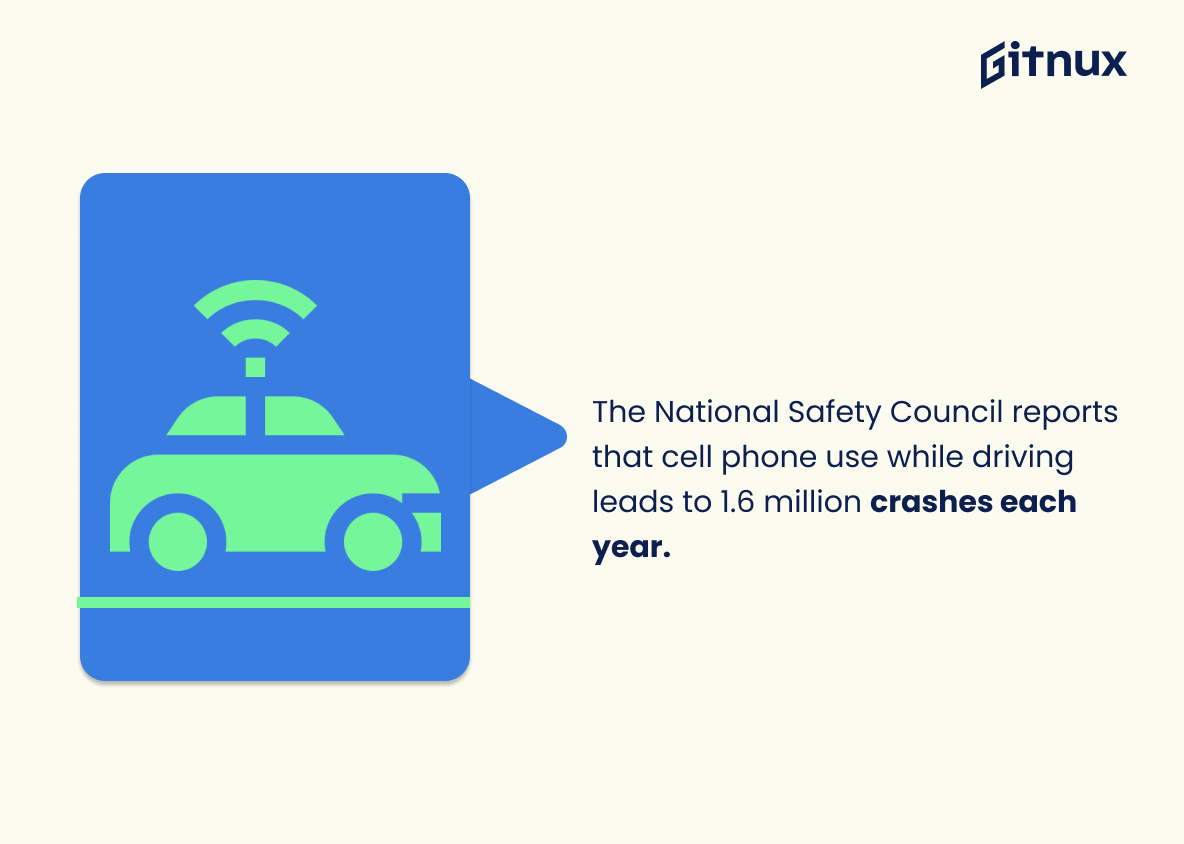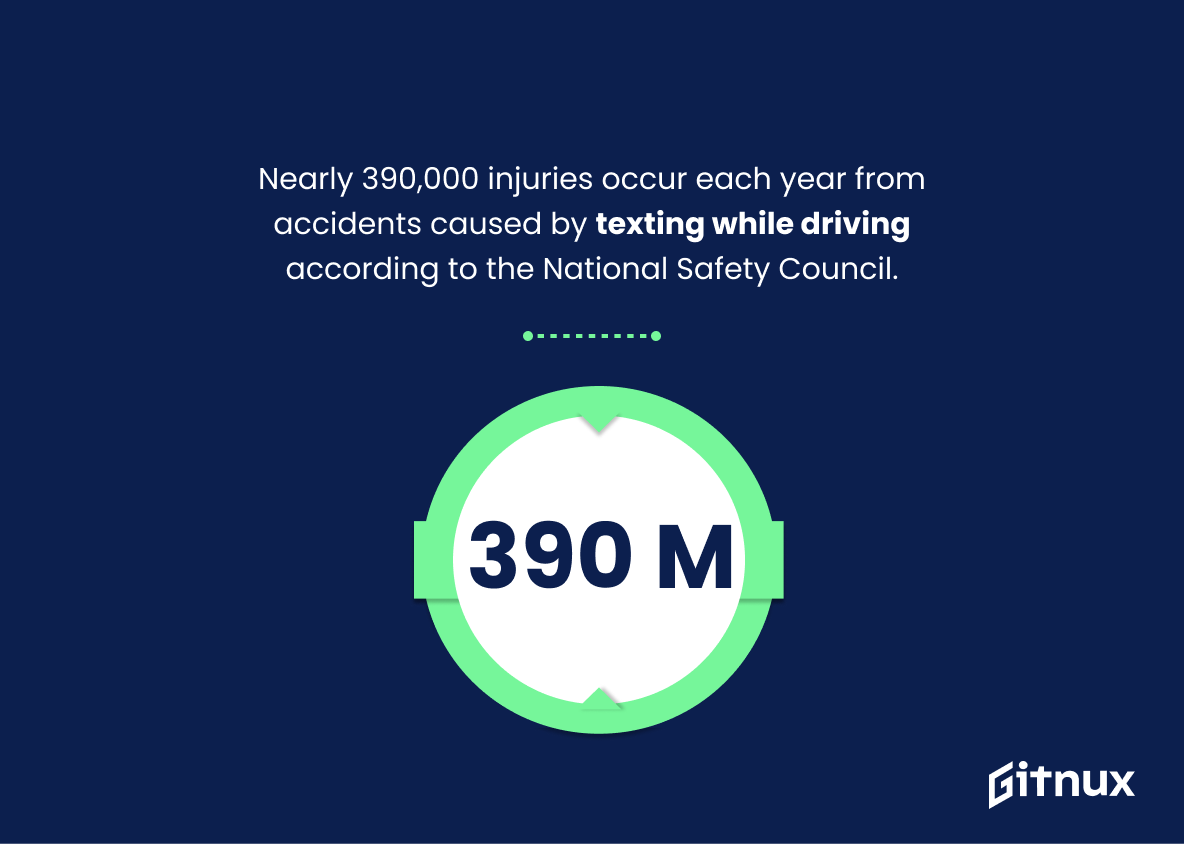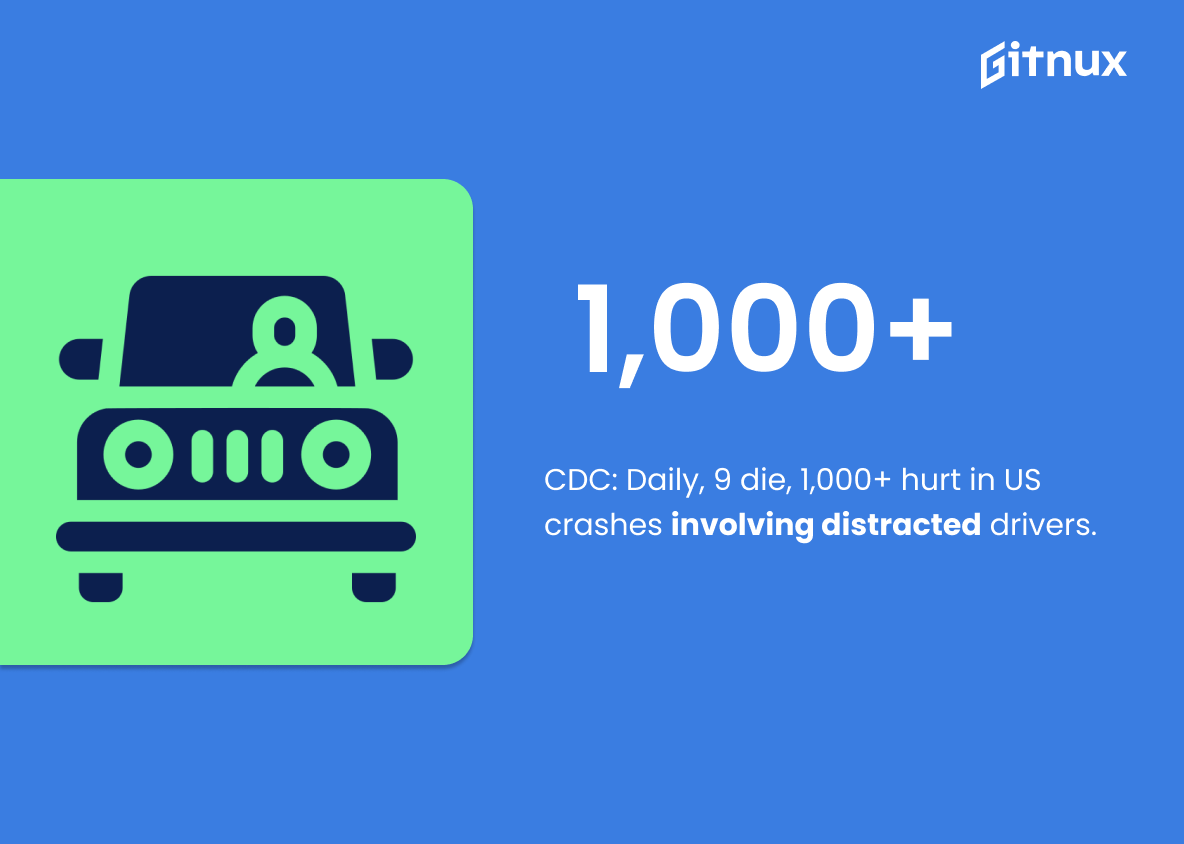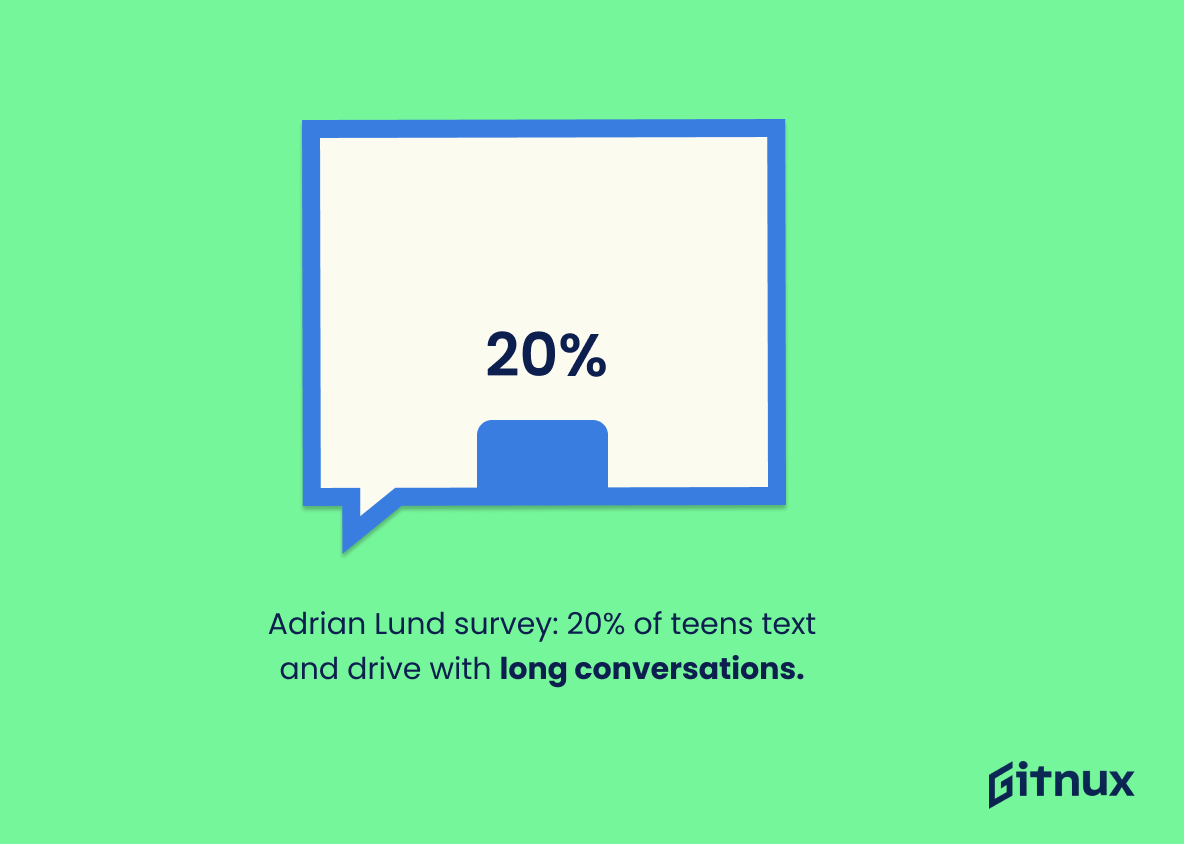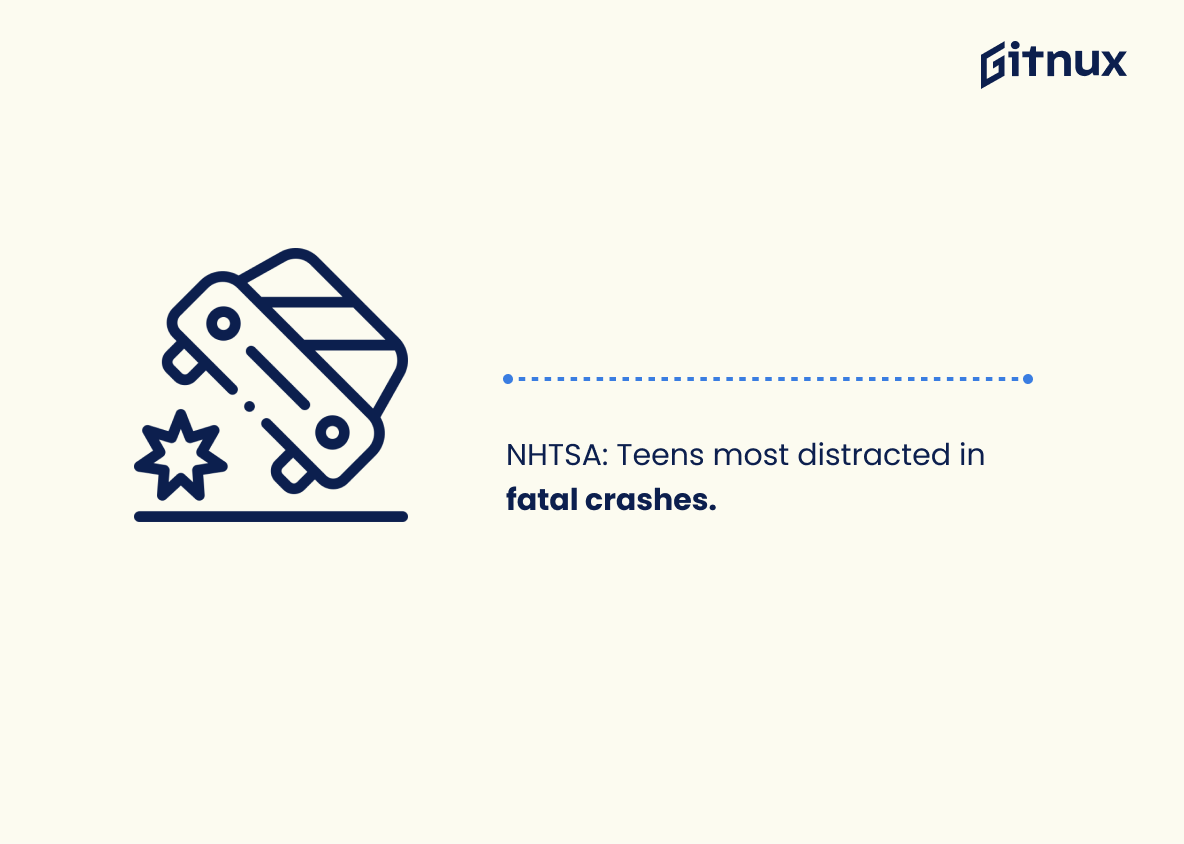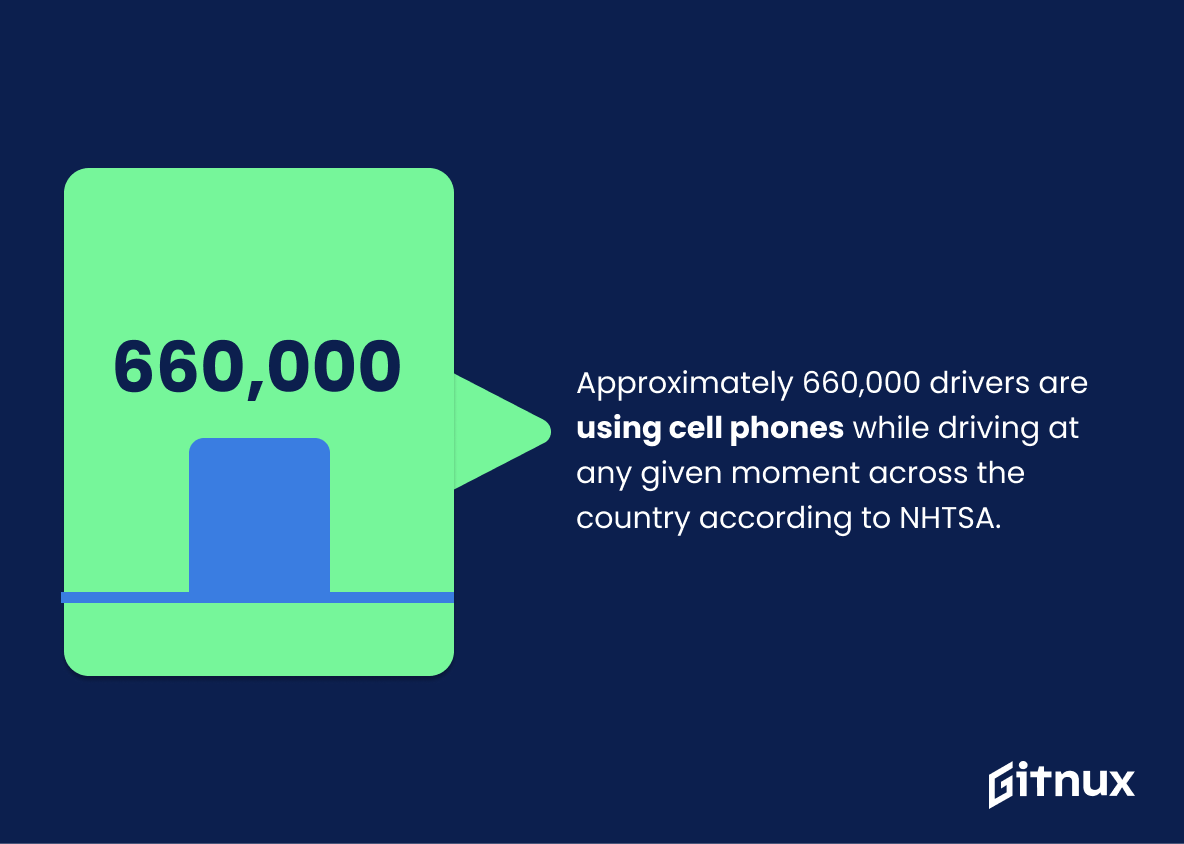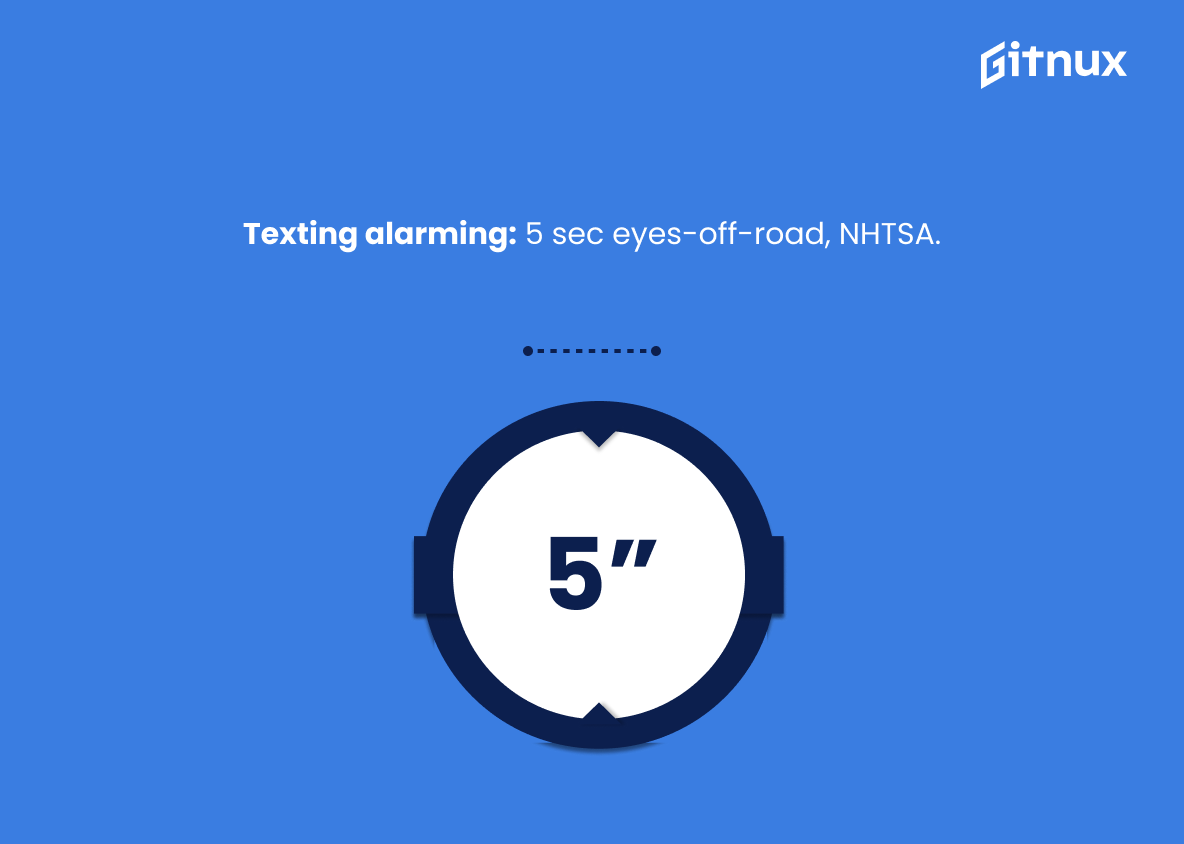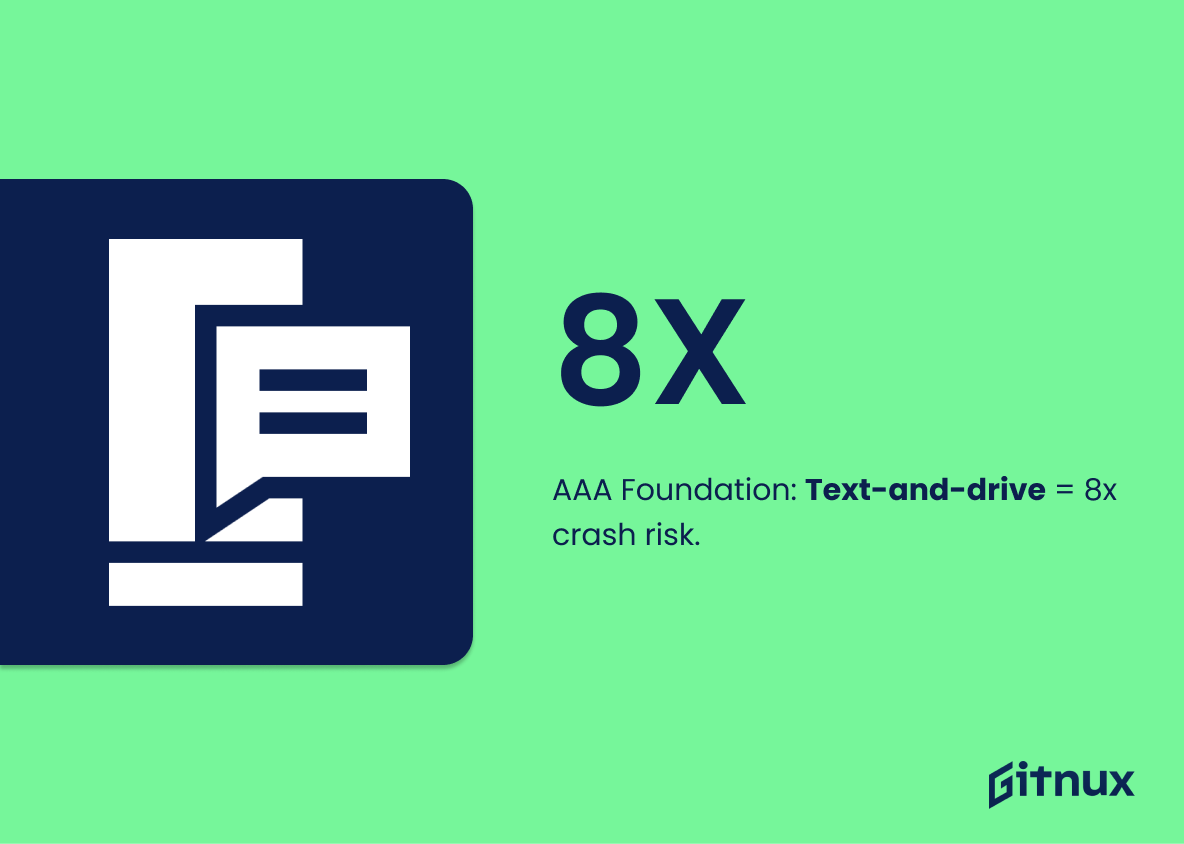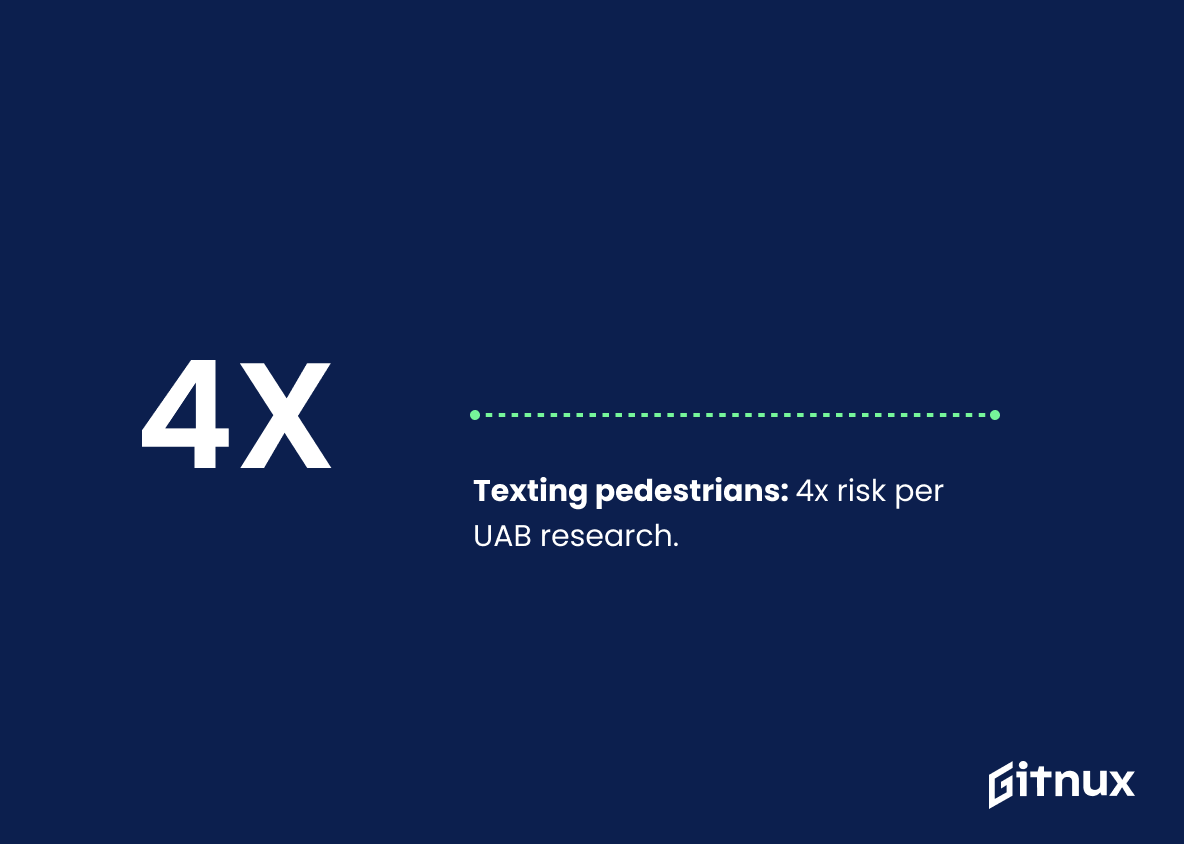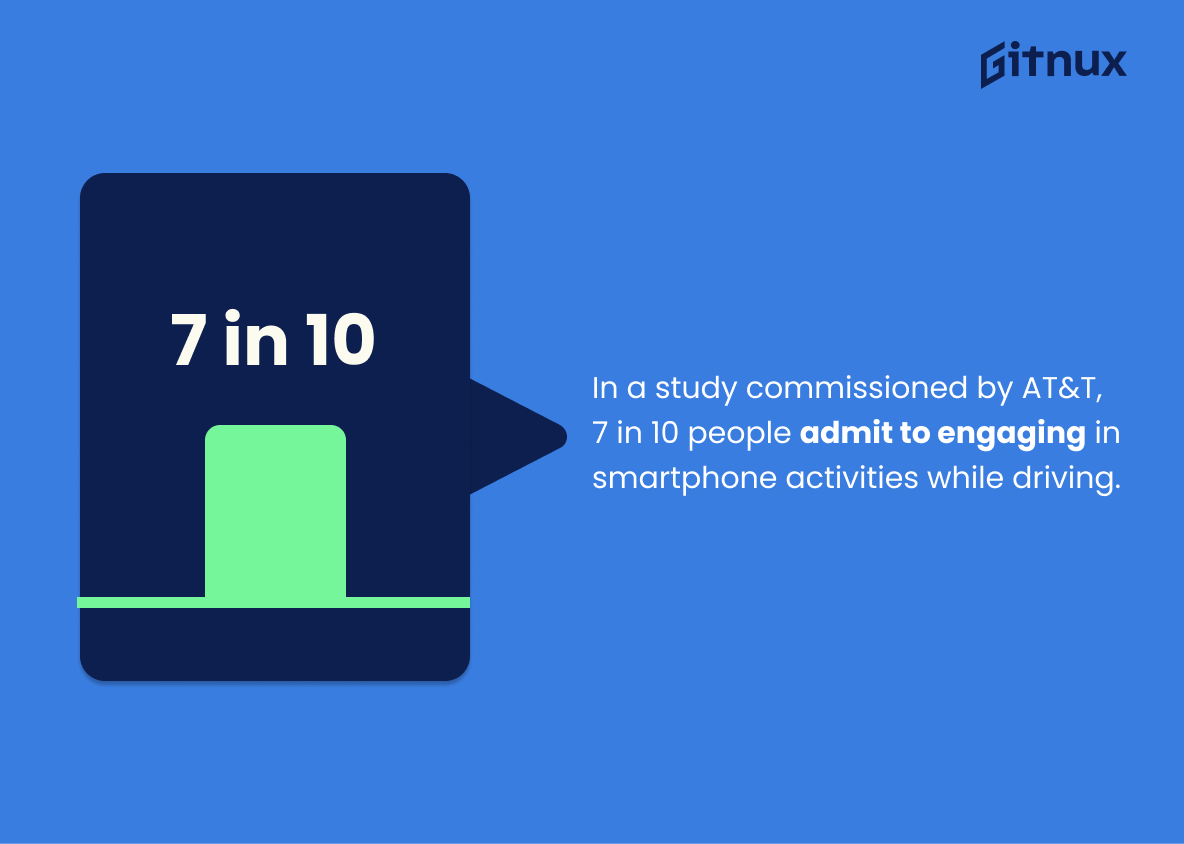In today’s digitized era where our lives are intrinsically intertwined with technology, the threat posed by texting and driving has never been more prevalent or dangerous. As we delve into the intricate tapestry of texting and driving statistics, we must confront the chilling reality that this modern phenomenon is evolving into a widespread epidemic. Data provides more than just figures; it paints a detailed picture of consequences, victims, and the escalating urgency for corrective measures. Join us as we unpack the gravity of texting and driving statistics, reflect on the stark stories they tell, and explore potential solutions to this daunting problem.
The Latest Texting And Driving Statistics Unveiled
According to the National Highway Traffic Safety Administration (NHTSA), in 2018, alone, 2,841 lives were claimed by distracted driving.
Highlighting this shocking figure from the National Highway Traffic Safety Administration provides sobering insight into the grave consequences of distracted driving. It puts a stark, numerical emphasis on the lethal risks involved, and enhances the urgency of our discussion about texting and driving statistics. As we unravel the layers of this preventable crisis, leveraging such powerful data offers a reality check and a compelling call to action for readers to reassess their driving habits.
The NHTSA reported that 9% of fatal crashes in 2017 were reported as distraction-affected crashes.
As we delve deeper into the realm of texting and driving statistics, the ominous revelation made by the NHTSA is glaringly imperative. A chilling 9% of fatal crashes in 2017 were tagged as distraction-affected crashes. This stark statistic provides a somber reminder of the devastating consequences that can result from the dangerous amalgamation of distraction and driving. It underscores the urgent need to enlighten society about the hazards of texting while behind the wheel, thus contributing significantly to our ongoing discourse on this vital subject.
Virginia Tech Transportation Institute says that text messaging creates a crash risk 23 times worse than driving while not distracted.
Projecting the risk associated with texting while driving, the Virginia Tech Transportation Institute’s statistics serve as an alarming amplifier to the chorus of caution. They starkly paint a grim scenario, where a message, literally costlier than its weight in gold, can lead to vehicular catastrophes 23 times greater than undistracted driving. This punctuates the blog post with an urgency to rethink our digital behaviors behind the wheel, putting in perspective the harrowing stakes involved with each beep of a new text. This statistic, effectively, becomes the pulsating heartbeat of our discourse on texting and driving, demanding attention and admonishing recklessness.
The National Safety Council reports that cell phone use while driving leads to 1.6 million crashes each year.
Unmasking the alarming reality, the National Safety Council’s report enlightens us with a striking figure: cell phone use while driving incites 1.6 million crashes each year. Now let this number sink in. In a world constantly buzzing with text notifications, this data injects a much-needed pause, provoking our thoughts on texting and driving. Framing this figure in the blog can jolt the readers out of complacency, heightening their awareness about the perils intertwined with this seemingly innocuous habit of texting while driving. It isn’t just a statistic; it’s a wake-up call for all – the drivers themselves, law enforcement agencies, policy makers, and every stakeholder in traffic safety. The stealthy danger of that ‘one quick glance’ at the phone thus comes to light, reinforcing the core message about road safety.
Nearly 390,000 injuries occur each year from accidents caused by texting while driving according to the National Safety Council.
With the advent of the digital age, no one can refute the significance of constant connectivity. However, when such communication blurs the lines of safety and recklessness, alarm bells should ring. The astonishing figure of 390,000 injuries each year cited by the National Safety Council starkly illustrates this point. This potent number signifies the often overlooked but grim consequence of texting while driving. In a blog post discussing texting and driving statistics, this piece of information serves as a harsh wake-up call, a reminder of the potential cost of one reckless text sent from behind the wheel. It paints the crucial picture about how serious and prevalent the issue is and how damaging the implications can be, therefore reinforcing the necessity for heightened awareness, stringent laws, and personal responsibility.
According to CDC, each day in the United States, approximately 9 people are killed and more than 1,000 injured in crashes that are reported to involve a distracted driver.
Drawing attention to the significance of this statistic, let’s delve into what this actually indicates. Fabricating the essence of a typical U.S. day, nine lives are prematurely extinguished and more than 1,000 people contend with physical injuries due to accidents that are tied to distracted drivers. A good chunk of these distractions often comes from the omnipresent cell phone usage, specifically, texting while driving.
The relevance of this statistic to the discourse on Texting and Driving Statistics is hard to overlook. It effectively underscores the urgent need to curb the phenomenon of texting behind the wheel. It not only adds weight to the argument about the widespread severity of distracted driving but also beckons us to take a moment to recognize the life-altering consequences that this seemingly innocuous activity could have, at times, leading to irrevocable loss. This piece of data is a clarion call to action for enhancing public safety guidelines, establishing stricter laws and regulations, and cultivating a collective responsibility towards responsible driving habits. The alarming numbers serve as a reality-check, urging individuals and policymakers alike to address this preventable driving hazard.
Survey by Adrian Lund reports that 20% of teens admit that they have extended, multi-message text conversations while driving.
Unveiling the digital distractions that plague our modern roads, Adrian Lund’s revelation that 20% of teens partake in prolonged, multi-message text dialogues whilst navigating traffic is a sobering warning. In a blog post dissecting the dangerous liaison between texting and driving, this statistic provides a chilling reality check. By not only highlighting the prevalence of this risky behavior, but also the intensity of such distractions, Lund’s research injects a layer of urgency into our discourse on road safety. Paving the way for both awareness and preventive measures, this unsettling figure stands as a clarion call to address the life-threatening hazards that technology can spawn when mishandled by young drivers. Thus, the 20% not only quantifies the problem, but also signifies a generational challenge that is worth dissecting for the safety of all road users.
Teens were the largest age group reported as distracted at the time of fatal crashes according to NHTSA.
The gripping reality brought to light by this NHTSA-reported statistic is like a glaring warning sign on a dark, winding road. It virtually screams to readers the harsh truth of how the youngest, most vibrant section of our society – teenagers – are leading in the grim dance of fatal crashes while distracted. Within the framework of a blog post talking about Texting and Driving Statistics, this fact acts as a chilling reminder. It punctuates the critical need for increased awareness and action to combat the potentially lethal blend of youthful inexperience, overconfidence, and the ubiquitous lure of smartphone distractions. Serving as a wake-up call, shaking our collective conscience, this statistic is insistent in its demand for immediate attention and measures to curb widespread negligent practices while driving.
Approximately 660,000 drivers are using cell phones while driving at any given moment across the country according to NHTSA.
Delineating the gravity of texting and driving requires tangible figures that shock us into reality, much like staring into headlights. Positioned on this strikingly alarming platform is the statistic unveiling that ‘Approximately 660,000 drivers are using cell phones while driving at any given moment across the country according to NHTSA.’ Such a number is far from trivial; it paints an unnerving image of the risk involved every time someone decides to use their phone while on the road. Ingredients in a cocktail of potential disaster, these drivers serve as kindling to the wildfire of road accidents induced by distracted driving. The looming shadow of these 660,000 potential calamities underscores the urgency and importance of addressing texting and driving as a dire public safety issue.
Texting is the most alarming distraction because sending or reading a text takes your eyes off the road for 5 seconds according to NHTSA.
Delving into the heart of this statistic, we uncover its profound implication in understanding texting and driving patterns. It offers a stark revelation about the absolute withdrawal of attention from the road, an eye-opening 5 seconds, that texting commands. Emphasizing the NHTSA’s findings bolsters the gravity of the situation, transmitting a crucial message about the association between texting and road safety. Therefore, in a blog post dedicated to dissecting the relationship between texting and driving, this significant statistic acts as a powerhouse of evidence, resonating with the urgency to tackle distractive driving.
According to the AAA Foundation, those who text and drive are eight times more likely to get into a crash.
In the bustling orchestra of life, driving requires a symphony of skills – focus, awareness, coordination and quick decision-making. Any disruption in this can unleash havoc, and that’s where the statistic from the AAA Foundation hits its striking note. The revelation that texting while driving magnifies your chances of being involved in a crash by eight times paints a stark picture of danger. Highlighted amidst a blog post about Texting And Driving Statistics, this fact resounds like a deafening gong, a compelling call to action to drop the phone and engage completely with the crucial task at hand – the road ahead. This eight-fold heightened probability is not merely a statistic but a silent scream for safer driving practices. It’s a call for everyone to care about their own lives, as well as those sharing the common space of roads, and thus warrants our focused discussion, awareness campaigns, and behavioral changes.
Drivers in their 20s constitute 27% of the distracted drivers in fatal crashes according to NHTSA.
In the labyrinth of Texting and Driving Statistics, the revelation that drivers in their 20s represent 27% of those involved in fatal distracted driving crashes (Based on NHTSA data), serves as a stark beacon. This disproportionately high percentage underscores the peril etched into the demographic’s driving habits. By giving this age group a face within the grim data, it prompts a more profound reflection on why this demographic sees greater repercussions, and leads to further exploration on its correlation with their greater propensity to text and drive. Therefore, understanding and communicating the dangers inherent in this trend poses a vital challenge with the hope to change the narrative.
Pedestrians who text are 4x more likely to be in a dangerous situation according to University of Alabama at Birmingham’s research.
Diving into the depths of this particular statistic, one can clearly envision the stark implications it has on the subject of texting and driving. Imagine, if mere pedestrians engrossed in their screens are quadrupling their chances of tasting danger, courtesy of the University of Alabama at Birmingham’s research, how much more dire would the situation be for someone driving a vehicle at high speed, with their attention similarly divided? Each tap of their fingers on their device’s screen might as well be rolling the dice for a menacing encounter. It fits seamlessly into the narrative of caution needed around texting and driving, reinforcing why such behavior is perilous and can lead to disastrous consequences.
In a study commissioned by AT&T, 7 in 10 people admit to engaging in smartphone activities while driving.
Diving deep into the realm of texting and driving statistics, this revelation from an AT&T commissioned study brings a startling reality into sharper focus. It presents salient evidence that a substantial 70% of drivers are using their smartphones while on the move. This figure, weighty in its own right, allows us to grasp the magnitude of this contemporary menace, proving it to be far from a minor occurrence. It solidifies the notion that texting and driving is not only widespread, but also an imminent threat to road safety. Hence, it renders a compelling backdrop for our ongoing dialogue regarding the urgency to eradicate such dangerous practices.
Conclusion
In conclusion, the evidence presented in this blog post clearly underlines the risk and potential danger of texting while driving. The statistics are alarmingly high, revealing this practice as a national concern that demands attention. It’s a behavior that not only puts the driver at risk but also jeopardizes the safety of other road users. Each statistic underscores a critical need for continued education, policy enforcement, and technological advancements to combat this issue effectively. Remember, no message is worth a life- let’s pledge to keep the roads safer by avoiding texting while driving.
References
0. – https://www.www.cdc.gov
1. – https://www.www.uab.edu
2. – https://www.aaafoundation.org
3. – https://www.injury.research.chop.edu
4. – https://www.www.nsc.org
5. – https://www.about.att.com
6. – https://www.www.vtti.vt.edu
7. – https://www.www.nhtsa.gov
8. – https://www.www.iihs.org
